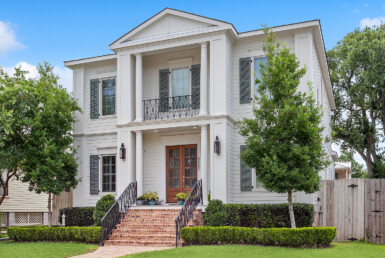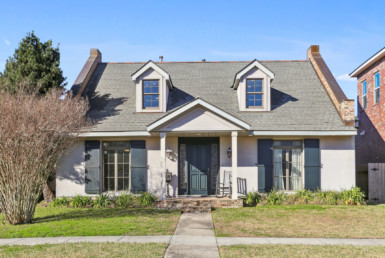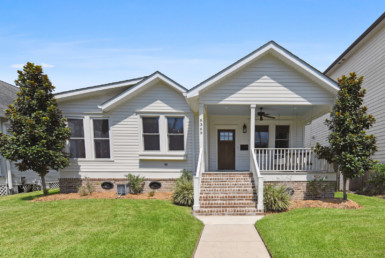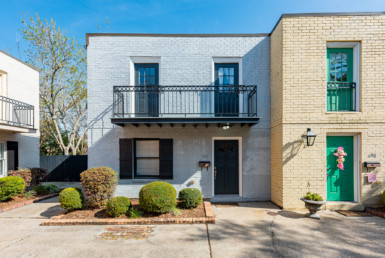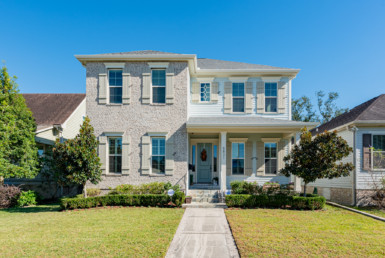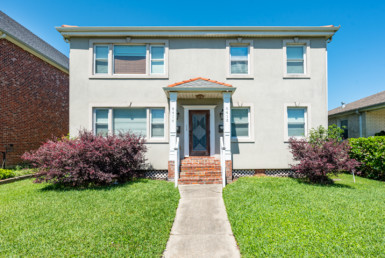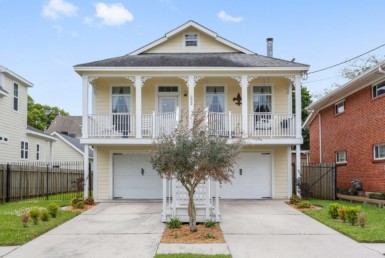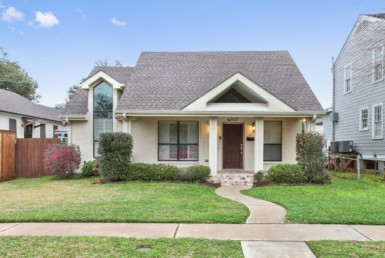South Lakeview
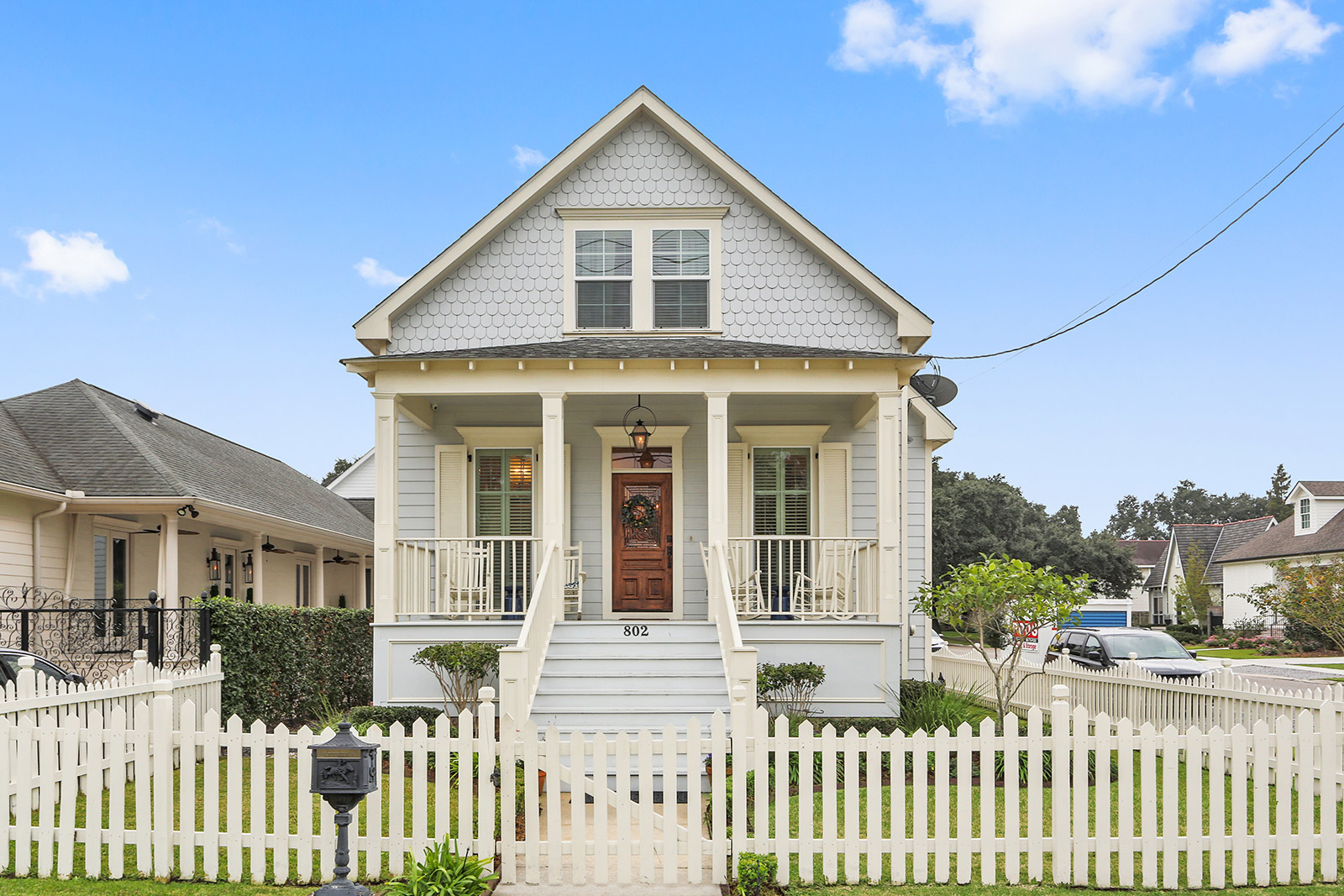
Entering the neighborhood of South Lakeview is like taking a trip back in time to an era when families lived in the same home for generations and those homes were built with care, quality workmanship and artistic vision. Developed in the 1920s, the neighborhood displays examples of California Craftsman-style bungalows constructed of Louisiana cypress, plaster and slate, as well as grand stucco Mediterranean Revival tile-roofed homes along Canal Boulevard. The last two remaining iron lamp poles that once lined Canal Street in front of the New Orleans landmark department store D.H. Holmes stand at the entrance to Louque Place off expansive Canal Boulevard.
This charming street, at the heart of the neighborhood, was named after the neighborhood’s developer, Charles Louque, a lawyer, city councilman and founder of the New Orleans Swamp Land Reclamation Company. The neighborhood, declared a National Register Historic District in 2002, is bordered by Navarre Avenue, General Diaz and Weiblen streets, and Hawthorne Place and is sometimes referred to as “Navarre.” Driving or walking through the quiet streets lined with crape myrtle trees, one can easily understand why scores of families were drawn to acquire these architecturally interesting and affordable new homes in the 1920s and 30s. Since that time the proximity of City Park, the New Orleans Museum of Art, and the resort atmosphere of Lake Pontchartrain, as well as its convenience to downtown, have contributed to the allure of this middle class, homogenous area.
South Lakeview traces its history to the time of Spanish rule when the wealthy landowner and philanthropist Don Almonester y Roxas purchased the marshy land between City Park Avenue and what is now the Jefferson Parish line from an order of Capuchins priests. In 1897 Charles Louque’s New Orleans Swamp Land Reclamation Company was renamed The New Orleans Land Company and undertook the task of draining the swamp to prepare the area where South Lakeview would be developed. Although small in area and including only 164 buildings, the historic district is part of one of the largest and oldest neighborhood associations in the state.
Established in 1924, the Lakeview Civic Improvement Association (www.lakeviewcivic.org) is made up of 2,700 members. Strolling the quiet streets amid crimson azaleas and palmettos, one will encounter these proud homeowners visiting with their neighbors. It is this sense of community and informality that has kept many families in South Lakeview for generations and continues to attract young families buying their first homes. Whether an owner of a modest, exposed-beam cypress cottage or a multi-storied, Mediterranean Revival residence, the common thread that connects them is a loyalty and love for their neighborhood.
Easily accessible by foot are amenities such as a supermarket, drug store, dry cleaners, several restaurants and city bus and streetcar service. Nearby schools and churches include Delgado Community College, The New Orleans Science and Math School, Lakeview Presbyterian School and Church, Grace Lutheran Church and First Baptist Church. South Lakeview was one of the neighborhoods hit hard by Hurricane Katrina in 2005. Over six feet of water stood in the streets and crept into the houses, where it remained for days and caused much loss of personal property. Fortunately, the solid construction and raised elevations of the historic homes contributed to the neighborhood’s survival.
Courtesy of the Preservation Resource Center of New Orleans.


